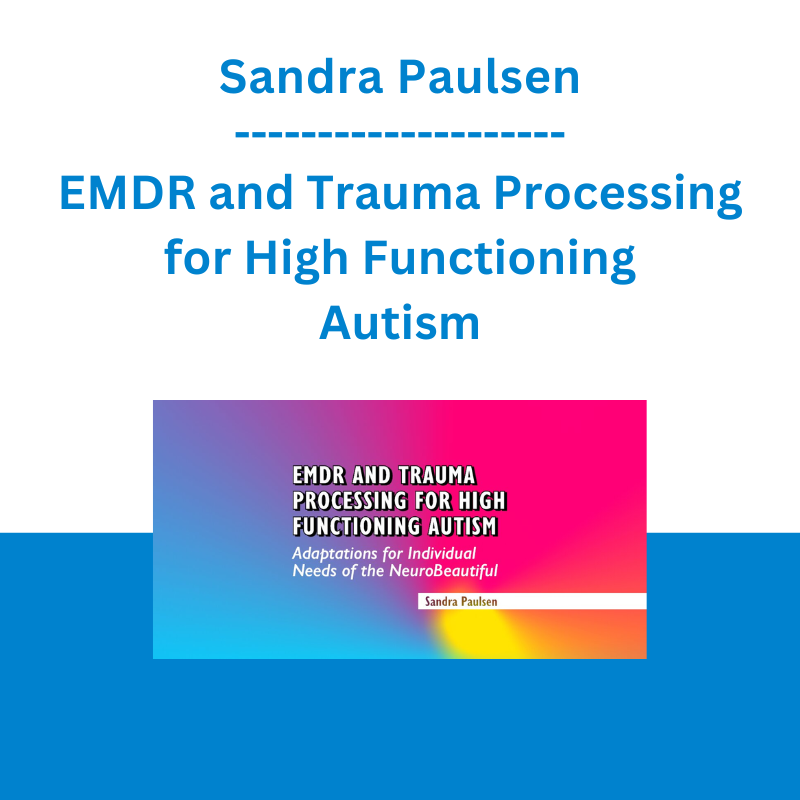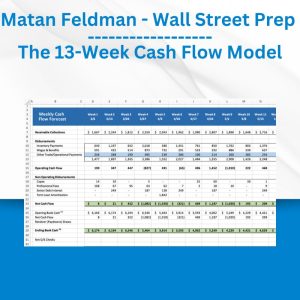*** Proof of Product ***
Exploring the Essential Features of “Sandra Paulsen – EMDR and Trauma Processing for High Functioning Autism: Adaptations for Individual Needs of the NeuroBeautiful”
Speaker: Sandra Paulsen, PhD
Duration: 1 Hour 46 Minutes
Format: Audio and Video
Copyright: Jul 07, 2023
Media Type: Digital Seminar
Description
High functioning autistic clients often face social rejection, bullying, exploitation, and feeling like the “odd person out,” which can be traumatizing.
Yet, few trainings have given therapists the skills they need to address this type of trauma in high functioning autistic clients.
This workshop will help you gain the unique skills and sensitivities necessary to help these clients navigate trauma in ways that respect their individual differences.
In this workshop, renowned expert Dr. Sandra Paulsen shares an insider’s perspective, clinical experience and research findings that will help you develop trauma processing skills from EMDR and other modalities. From a neurodivergent viewpoint, you will discover key considerations and learn strategies that enhance your therapy… such as:
- Recognize the crucial connection between trauma and autism spectrum experiences
- Use EMDR to overcome core experiences of social rejection, judgements, and isolation
- Step-by-step breakdown of each phase of EMDR so you can customize it for every unique client
- Soothe nervous system dysregulation and help clients create a baseline of safety and regulation
- Skills to navigate dissociation, silence in session and incorporate storytelling
All with handouts, references and assessment instruments!
Join us and gain practical insights, expand your therapeutic toolkit, and learn how to provide trauma-informed care that supports the unique needs of clients on the autism spectrum!
Speaker
Sandra Paulsen, PhD
Paulsen Integrative Psychology
Sandra Paulsen, PhD, is an international instructor, author and illustrator of principles and procedures for using EMDR with complex trauma including structural and somatic dissociation and trauma held in implicit memory. She has published widely on the combination of EMDR with ego state therapy, somatic methods and early developmental repair strategies. Her books include coediting The Neurobiology and Treatment of Traumatic Dissociation: Toward an Embodied Self, with Ulrich Lanius and Frank Corrigan. She wrote and illustrated Looking Through the Eyes of Trauma: An Illustrated Guide for EMDR Therapists and Clients, as well as When There Are No Words: EMDR for Very Early Trauma in Implicit Memory. She coauthored and illustrated a children’s book that is also very useful for dissociative adults called All the Colors of Me: My First Book on Dissociation, with Ana Gomez.
Sandra is a Fellow of the International Society for the Study of Trauma and Dissociation. She developed the first protocol for the use of EMDR with highly dissociative individuals, publishing cautions about EMDR with dissociation, and for first urging the screening of every client for dissociation before administering EMDR. She has trained hundreds of mental health professionals in these special procedures since 1993.
Speaker Disclosures:
Financial: Dr. Sandra Paulsen has employment relationships with Paulsen Integrative Psychology, PLLC, Paulsen Consulting Resources, and Steve Frankel Group. She received a speaking honorarium from Alpha-Stim. Dr. Paulsen receives royalties as a published author. She receives a speaking honorarium from PESI, Inc. All relevant financial relationships with ineligible organizations have been mitigated.
Non-financial: Dr. Sandra Paulsen is a fellow of the International Society for the Study of Trauma & Dissociation and is a member of the EMDR International Association. She is an advocate for EMDR for trauma treatment.
Objectives
- List six assessment methods for individuals on the spectrum.
- Outline the phenomenology of high functioning autism across eight constructs.
- Propose four ways therapists can attenuate the challenges of the work for HFA.
- List five changes to the eight phases of trauma processing to take HFA into account.
Outline
Neurodiverse & Neurobeautiful
- A different nervous system
- Seeing gifts instead of pathology
- Discover your client’s superpowers
- Recognize high-functioning vs savant
- Utilize screens, assessments and scales
Autism and the Brain
- Seemingly contradictory qualities of “high functioning”
- Foundation of Pankseppian Affective Processing Theory
- Dendritic branching and associative linkages
- Developmental considerations and differences
- Impact of a less lateralized brain
- Amygdala and the “deep brain”
- Additional challenges related to trauma processing
The Phenomonology of High Functioning Autism
- It all beings with Spoon Theory
- When the pot boils over… meltdowns, overload & shutdown
- The constant challenge of self-regulation
- Sensory protectiveness & stimming for self-regulation
- Understand “monotropism” & the problem of interruption
- Silence in the DSM: Somatic Features
- Masking and Adaptive Morphing
The Eight Phases of EMDR & Other Trauma Processing
- The Common Trauma Loop
- Overcome the “chicken vs the egg”
- Core narratives from social rejection
- Steps to connect and build rapport sensitively
- Considerations & adaptations for EMDR phase
- Overcome common challenges to using EMDR with HFA
- How to incorporate storytelling
- Diverse assessments and scales
- What to do when dissociation is present
- Being patient – allowing for silence with delayed processing
- Considerations for working with children
- Use body scans effectively and appropriately
- Closure and follow-up, how it’s different
Target Audience
- Counselors
- Social Workers
- Psychiatrists
- Psychologists
- Case Managers
- Addiction Counselors
- Therapists
- Marriage & Family Therapists
- Psych Nurses
- Other Mental Health Professionals
Please see the full list of alternative group-buy courses available here: https://lunacourse.com/shop/









